All the Mammals of the World
原价为:$113.92。$102.53当前价格为:$102.53。
插画师
有库存
原价为:$113.92。$102.53当前价格为:$102.53。
“这是一本极具视觉冲击力的书,拿起来翻阅绝对是一种享受,甚至在翻开第一页之前,封面上与雪豹的眼神交流就已经预示了这一点。(……)这无疑是一项终身投资,任何新晋自然学家都会为之折服。强烈推荐”。
鸟类指南 , 2024 年 1 月
重量
4.3 kg
尺寸
24 × 31 厘米
页面
800
出版日期
5 月 2023
出版商
Lynx Nature Books
插画师
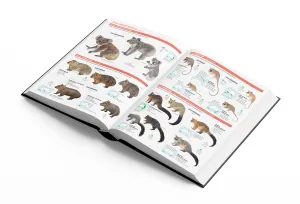
探索每页图文并茂的页面中蕴含的丰富细节和特色!

要购买《世界上所有的鸟类》和《世界上所有的哺乳动物》套装,请点击并节省 9 欧元
说明
这是有史以来第一次,您可以在一本简单易用、图文并茂的单行本中阅读《世界上所有的哺乳动物》。 本书面向广大读者,从野生动物爱好者到哺乳动物学专家、研究人员、自然保护主义者,以及任何对哺乳动物的壮观多样性感兴趣的人,每个人都能在本书中找到适合自己的内容。
- 共介绍 6581 个物种,包括 6459 个现存野生物种、19 个家养物种和 103 个灭绝物种。
- 7349 幅插图涵盖所有物种以及性二型、形态和一些独特的亚种。
- 如果有相关的长度和质量测量数据,也会提供,如果重要,还会提供组别的其他数据。
- 6459 幅分布图,附有书面摘要和海拔范围说明。
- 所有 2834 个一国特有物种都有明确标记。
- 提供物种的英文、法文、德文和西班牙文俗名以及学名。
- 每个物种在《世界自然保护联盟红色名录》中都有灭绝风险类别,以突出研究和保护的重要性。
- 各分类群亚种数量的分类学摘要。
- 附录列出了从《世界哺乳动物图解名录》到《世界哺乳动物图解名录》的所有分类变化。 世界哺乳动物图解名录 到现在的所有分类变化,包括 107 个新描述的物种和 106 个分离的物种,并解释了最重要的情况。
- 1500 年后灭绝的 100 多个物种在各自的附录中单独列出,并附有文字和分布图。
- 在单独的附录中提供了公认的家养物种摘要。
- 世界彩色参考地图集》共 37 页,包含哺乳动物爱好者和专业人士感兴趣的相关详细信息。
- 浏览世界上所有哺乳动物的最简单、最愉快的方式。
世界所有哺乳动物》有两个明确的前身,其许多目标都与之相同,特别是在全世界传播和提高人们对哺乳动物和野生动物的兴趣:《世界所有哺乳动物手册》和《世界所有哺乳动物名录》。 世界哺乳动物手册 世界哺乳动物手册》系列,共 9 卷,是第一本包括世界上所有哺乳动物的印刷品;以及 世界哺乳动物图解名录 两卷本的《世界哺乳动物图解核对表》对前一出版物进行了分类学回顾。 世界所有哺乳动物》一书旨在让更多读者了解世界哺乳动物的丰富性和多样性。
世界所有哺乳动物》和《图解清单》两卷本之间有许多不同之处。 一个显而易见的原因是,本书是单行本,其价格比《清单》低得多。 我们希望它能让更多的人更容易接受,因为对于他们来说,核对表可能过于技术性,而且价格也不是那么实惠。
总之,读者有史以来第一次可以在一本简单易用、图文并茂的单行本中了解世界上所有的哺乳动物物种,而且价格比其他介绍世界哺乳动物的作品甚至一卷都要低得多。 我们希望这本新书能够影响到更多的人,激发并提高他们对哺乳动物和野生动物的兴趣,并希望这本书能够成为许多人热爱自然、生物多样性和保护地球的第一步。
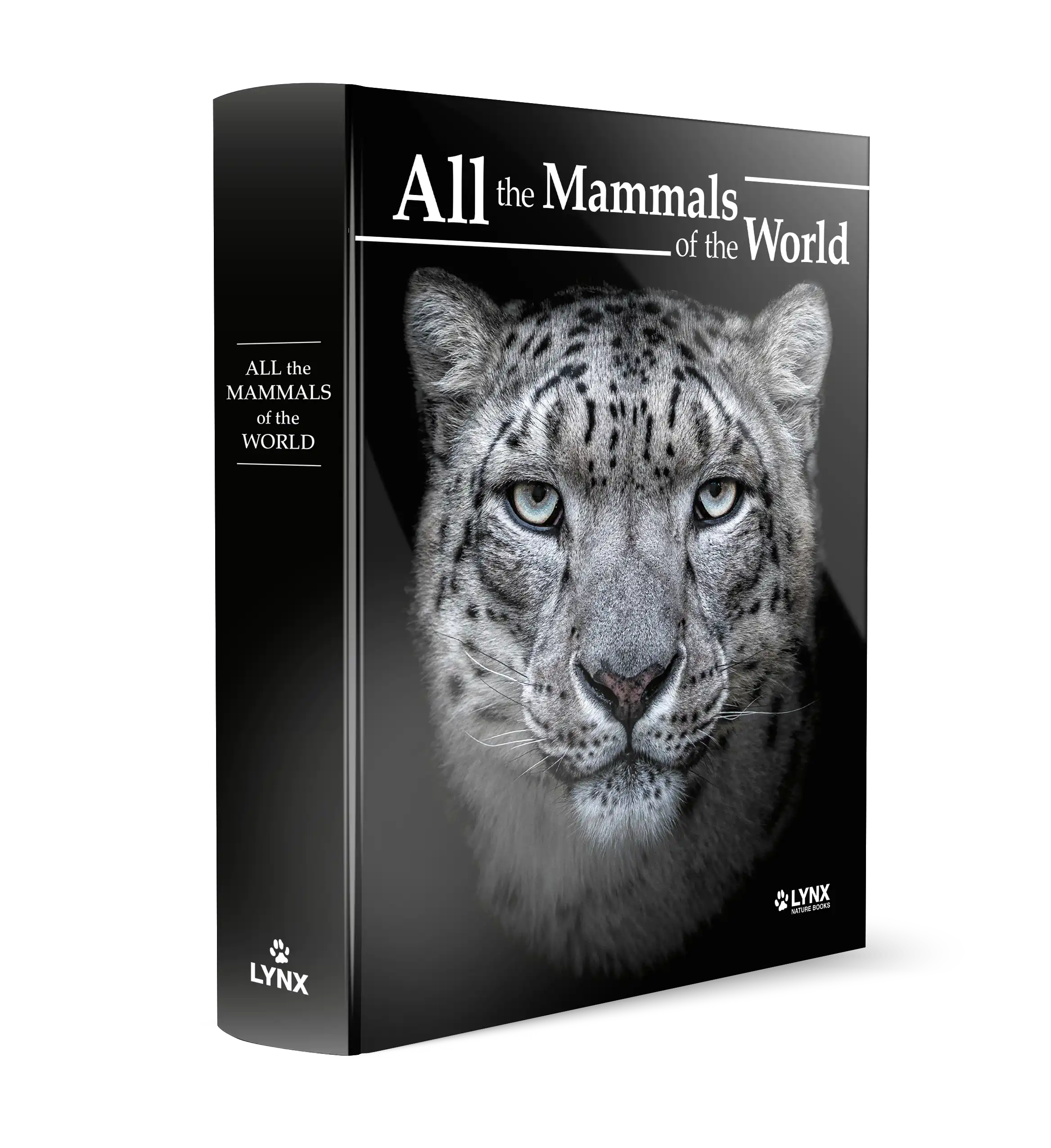
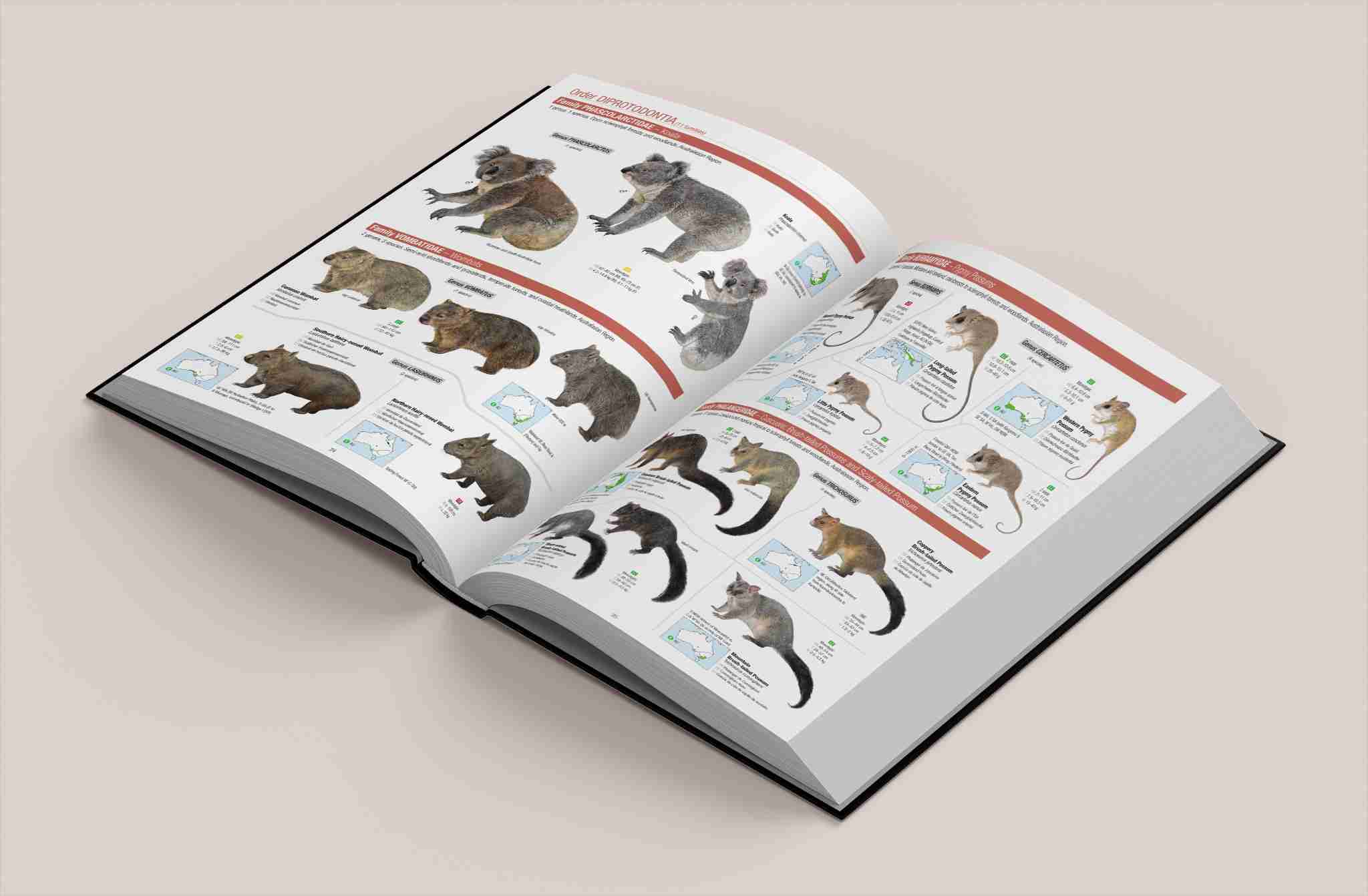
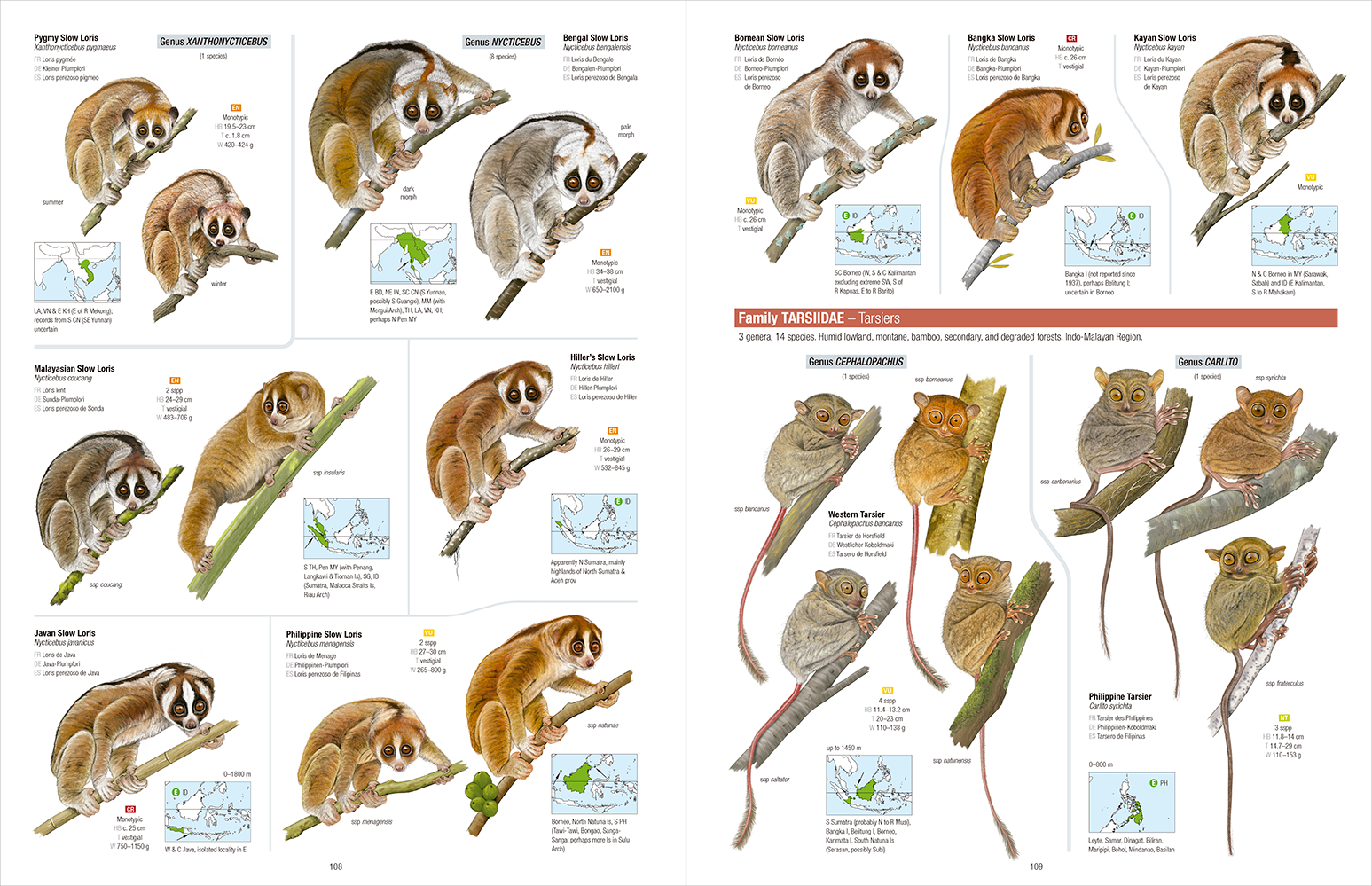
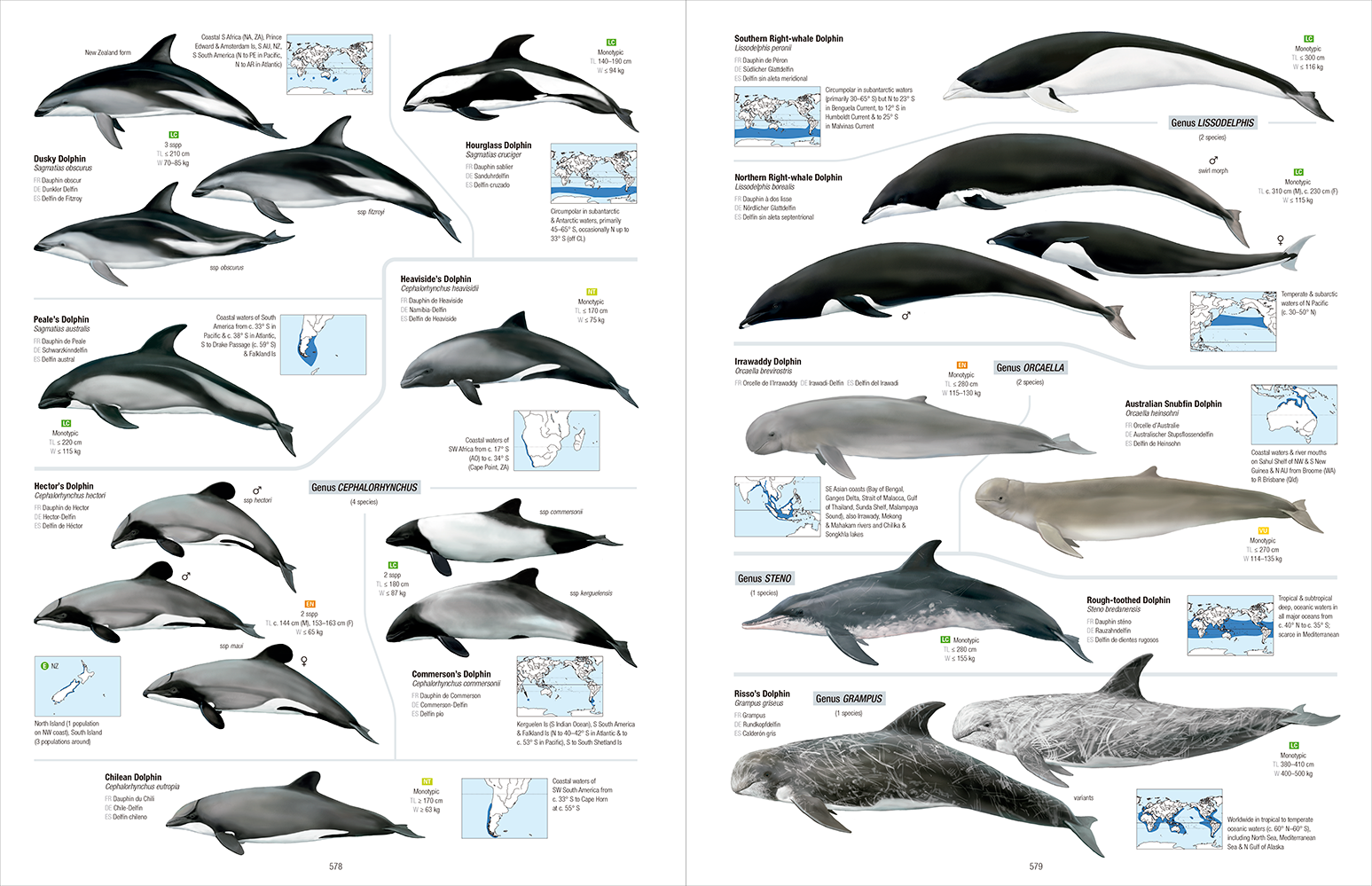
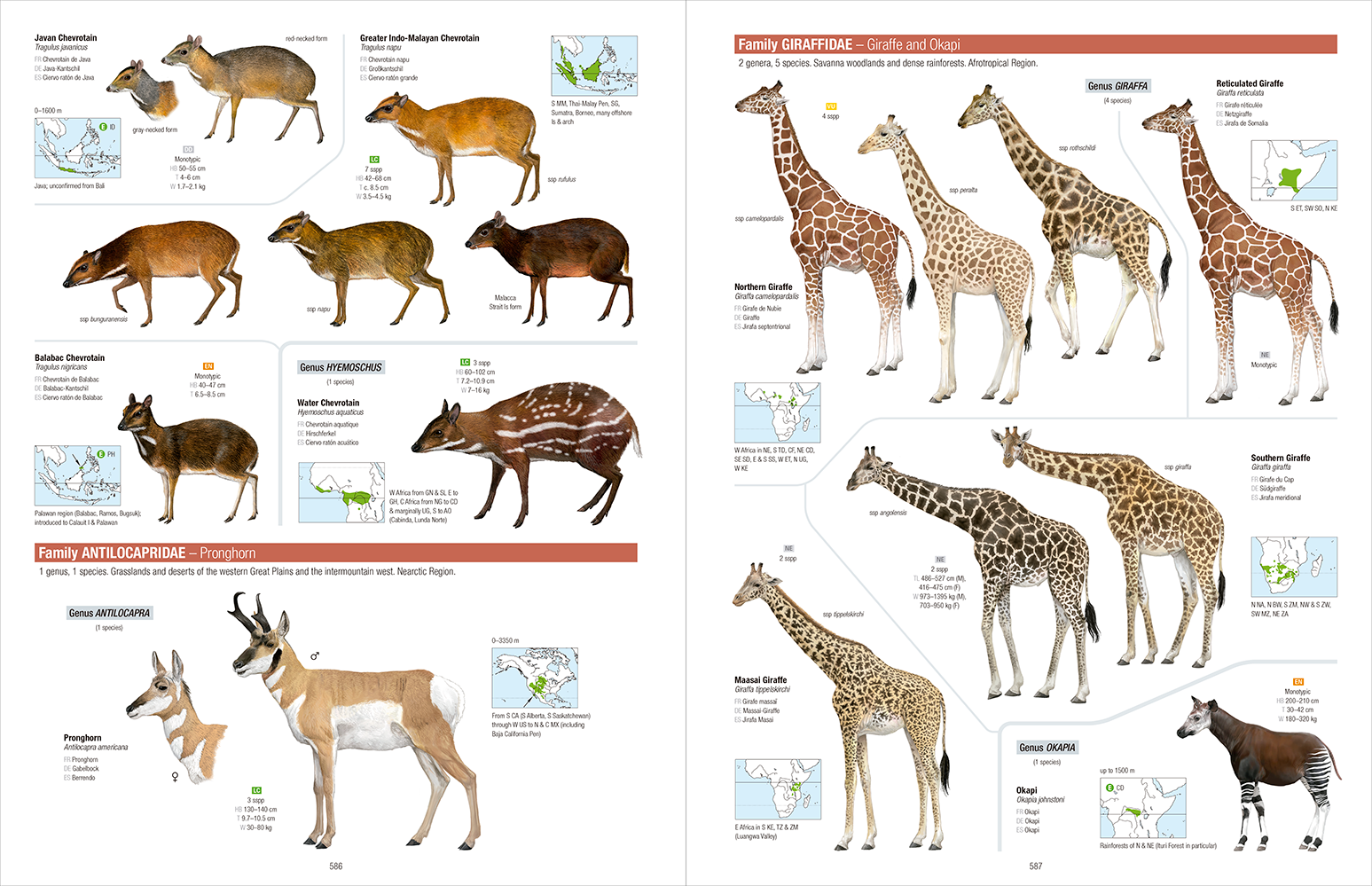
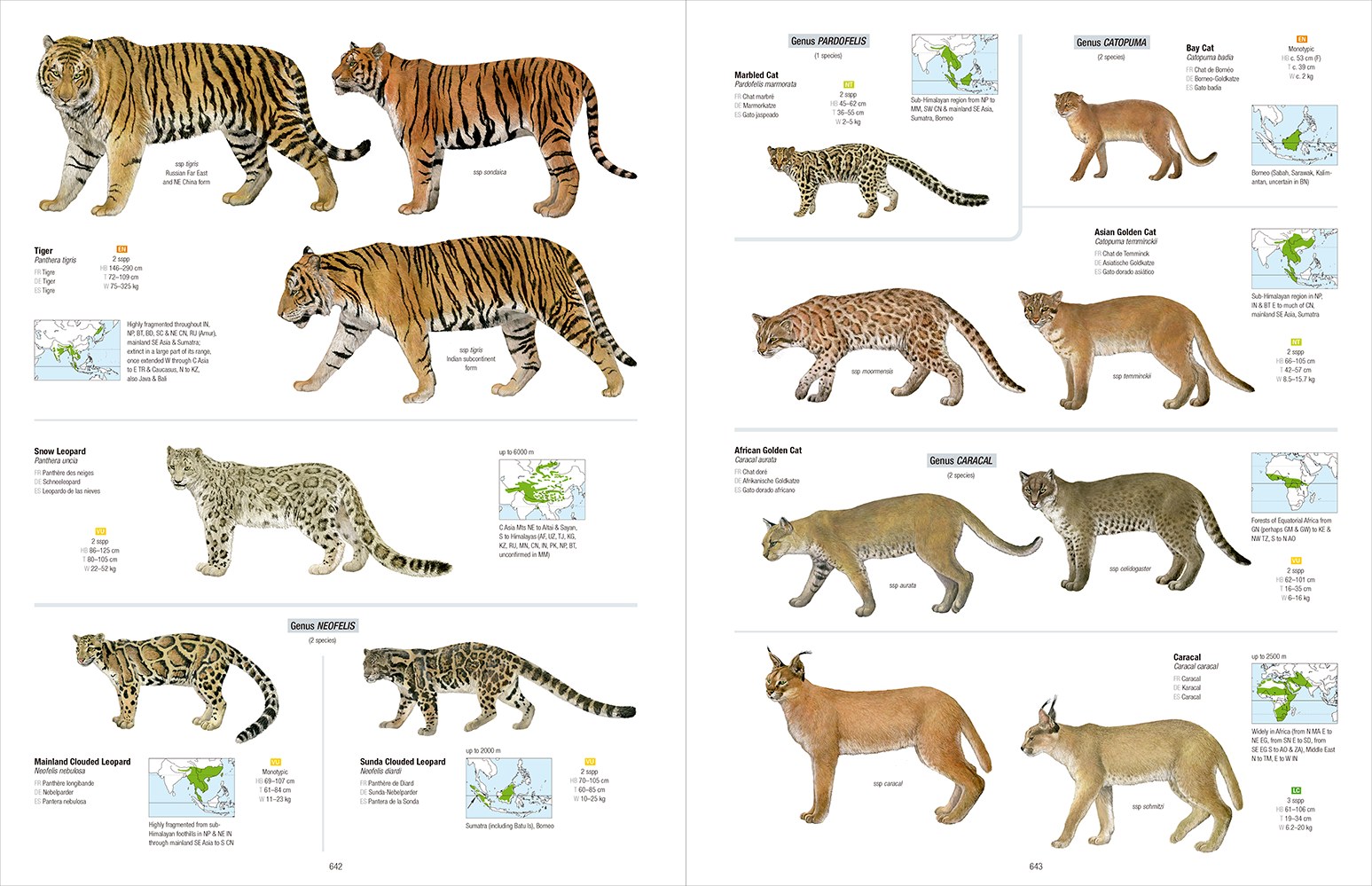
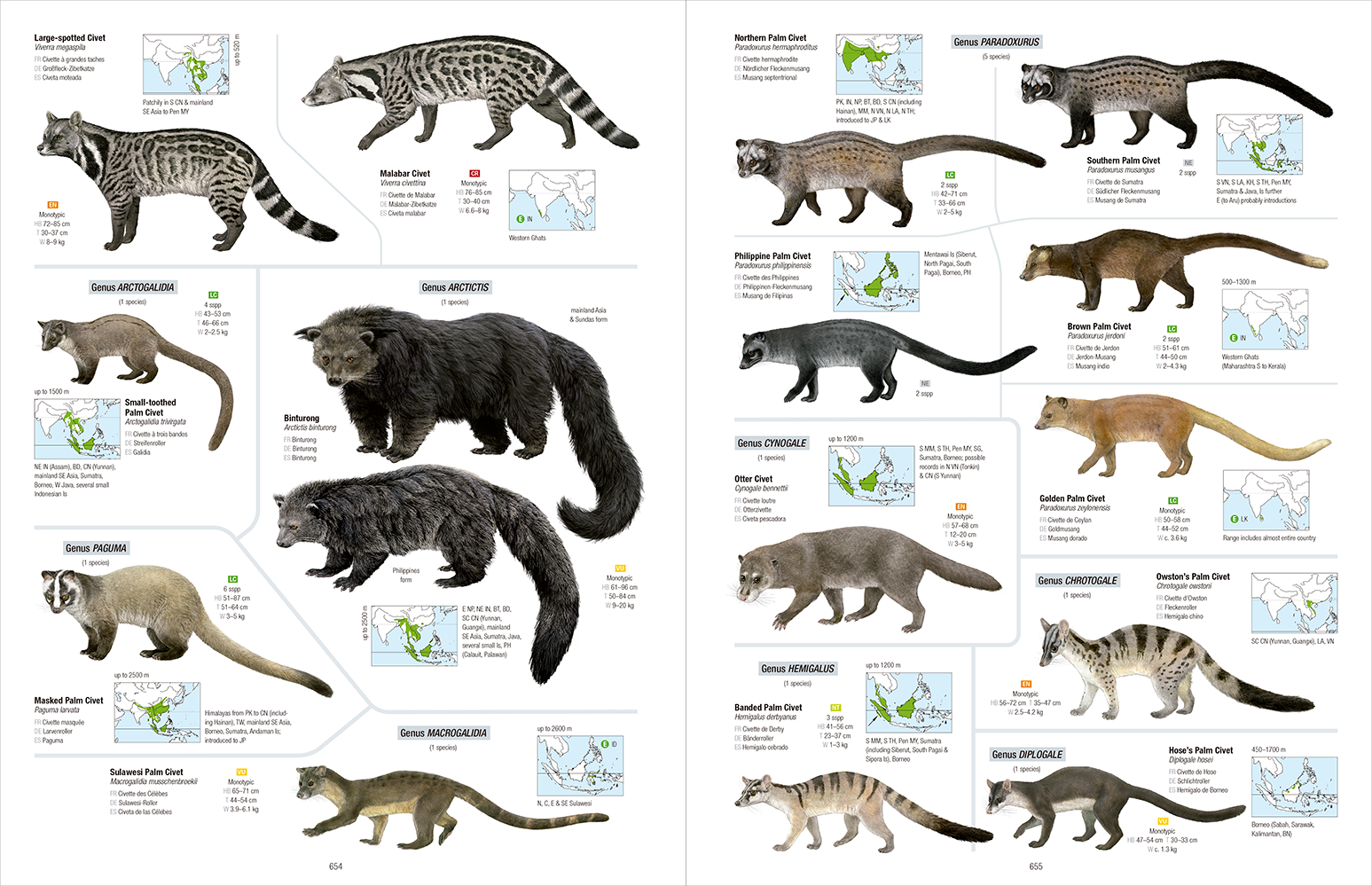

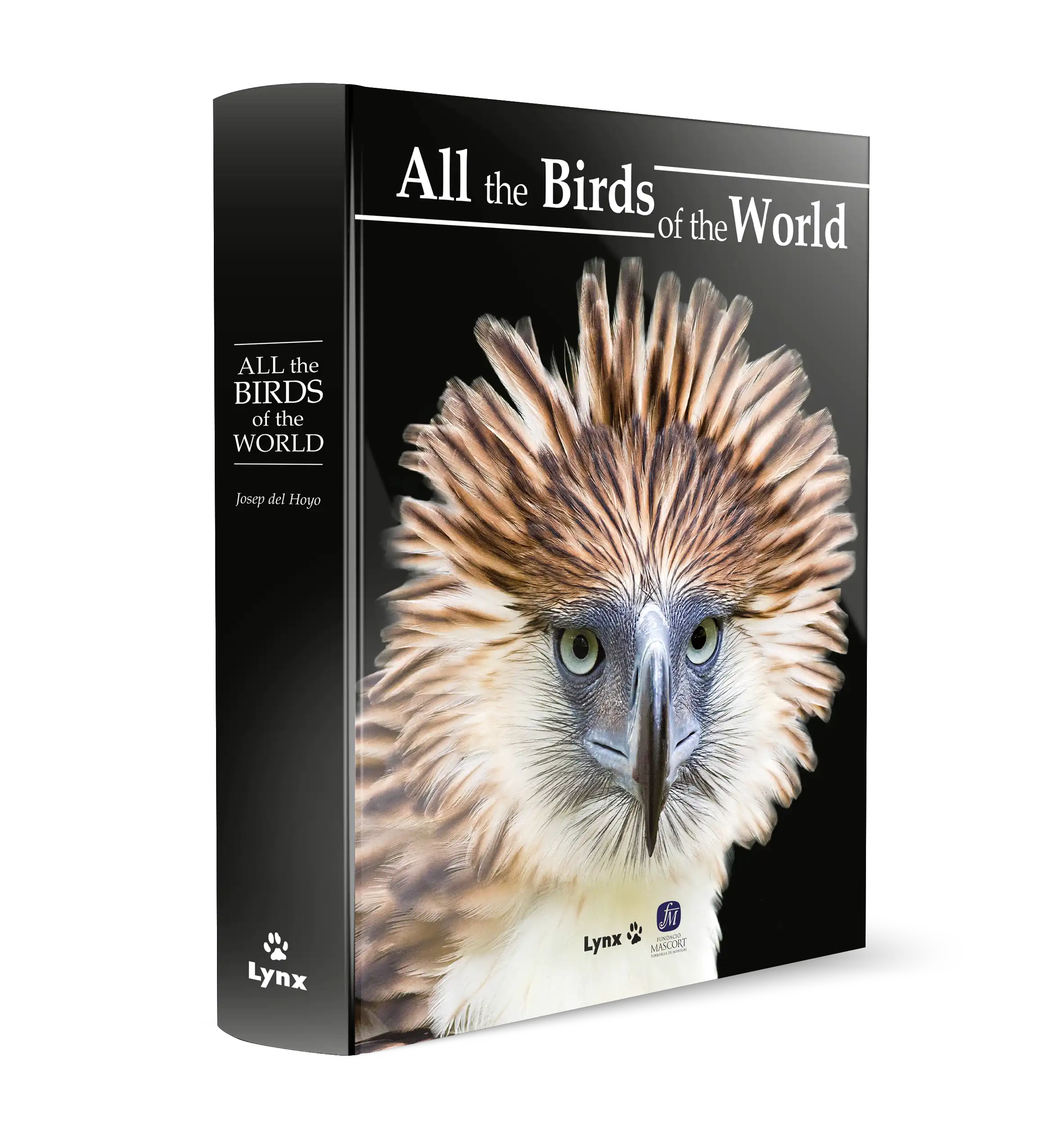
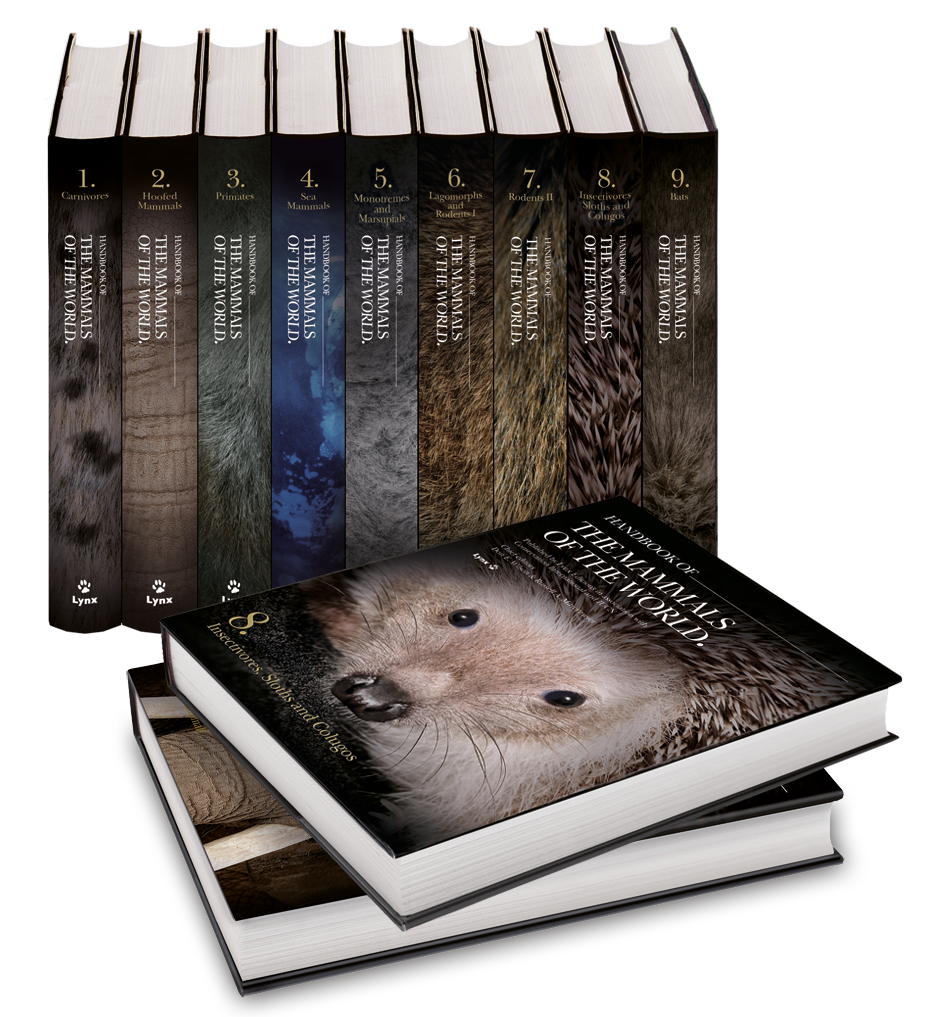
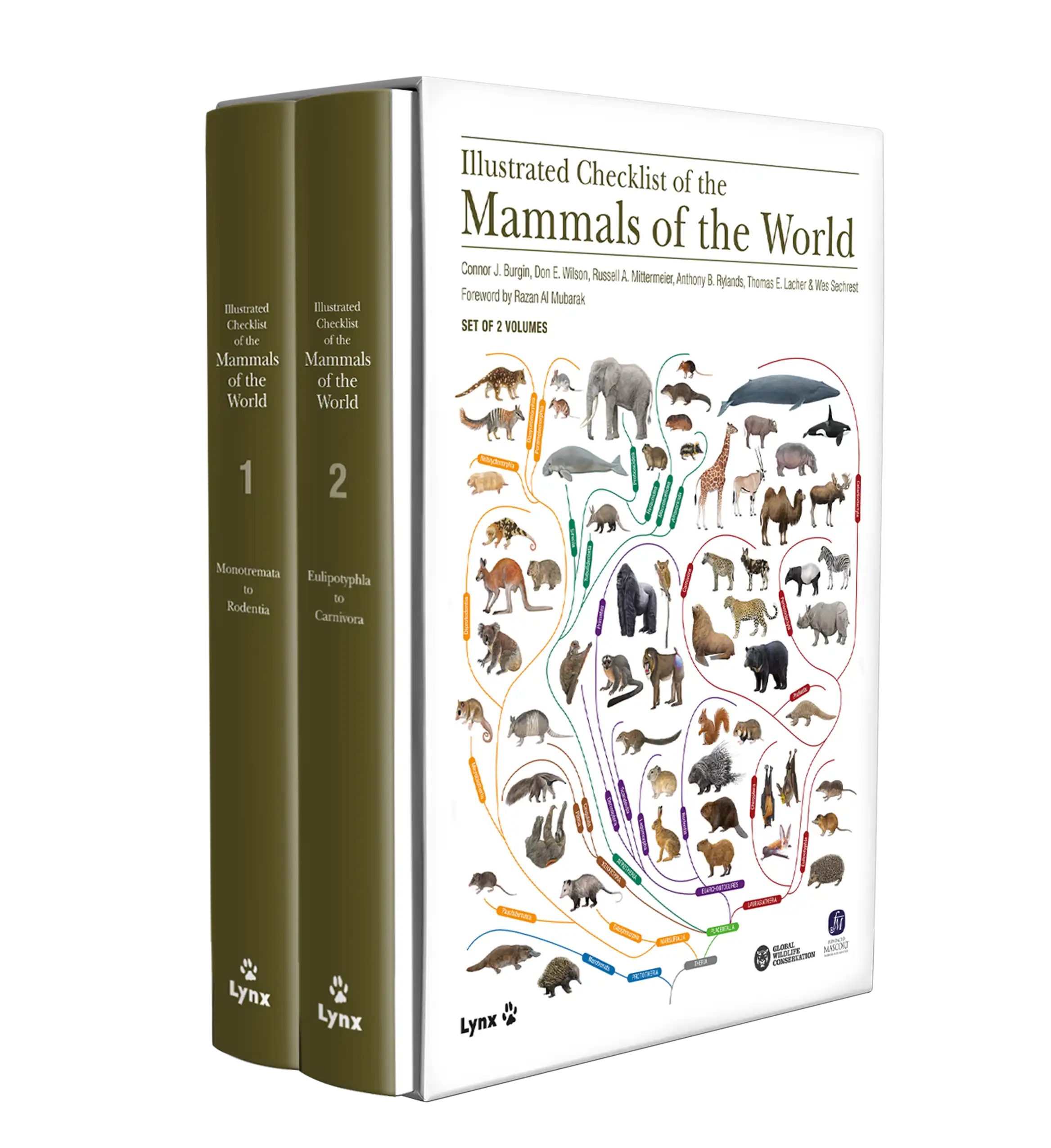
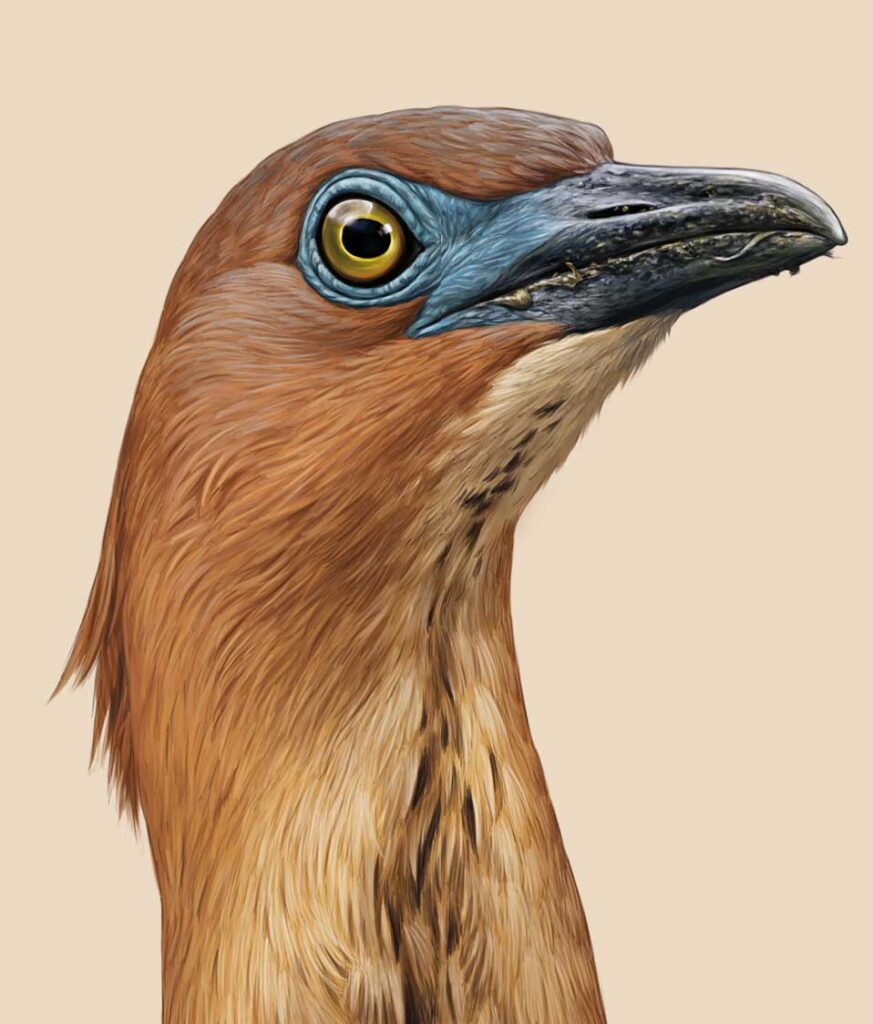
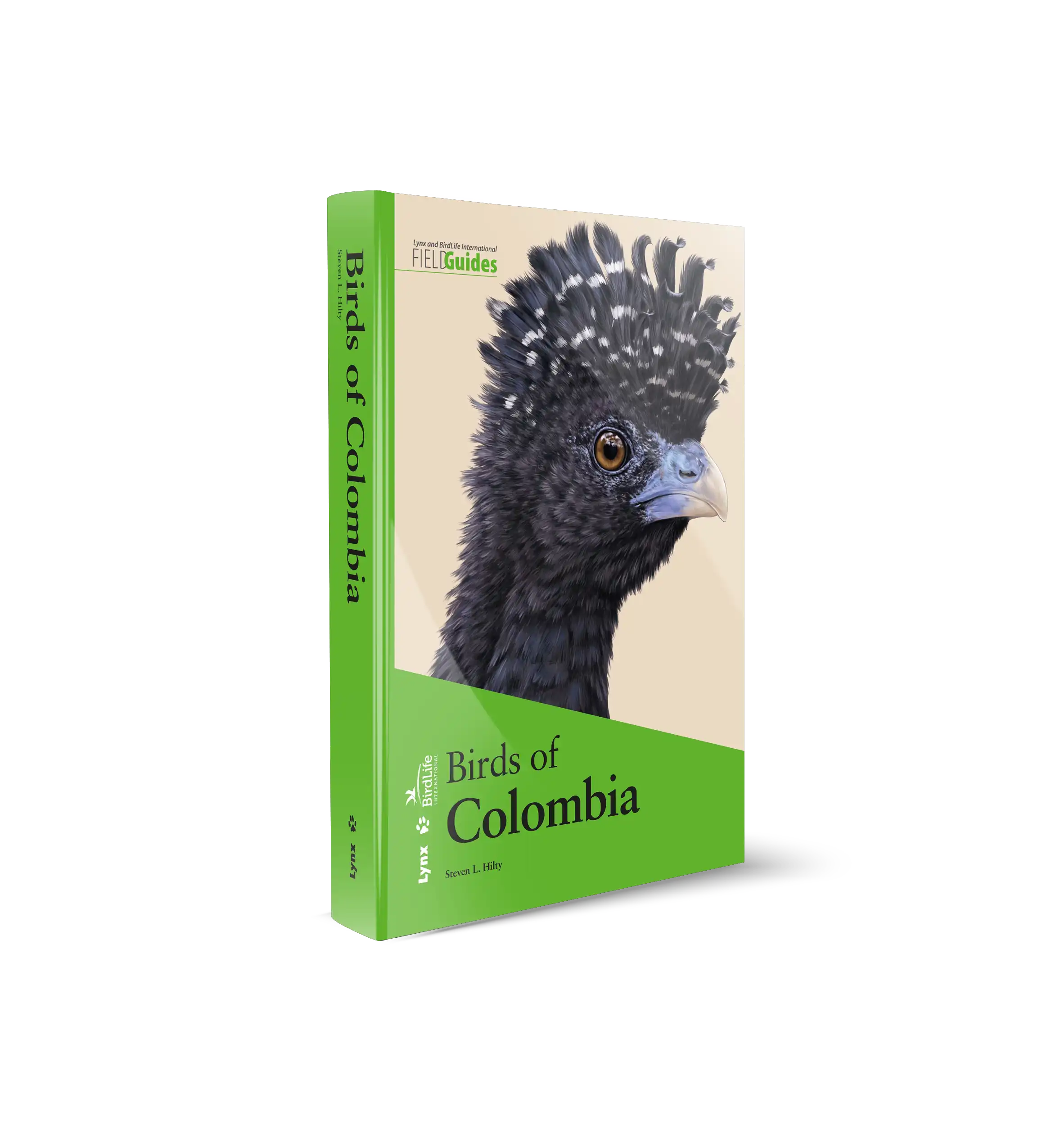
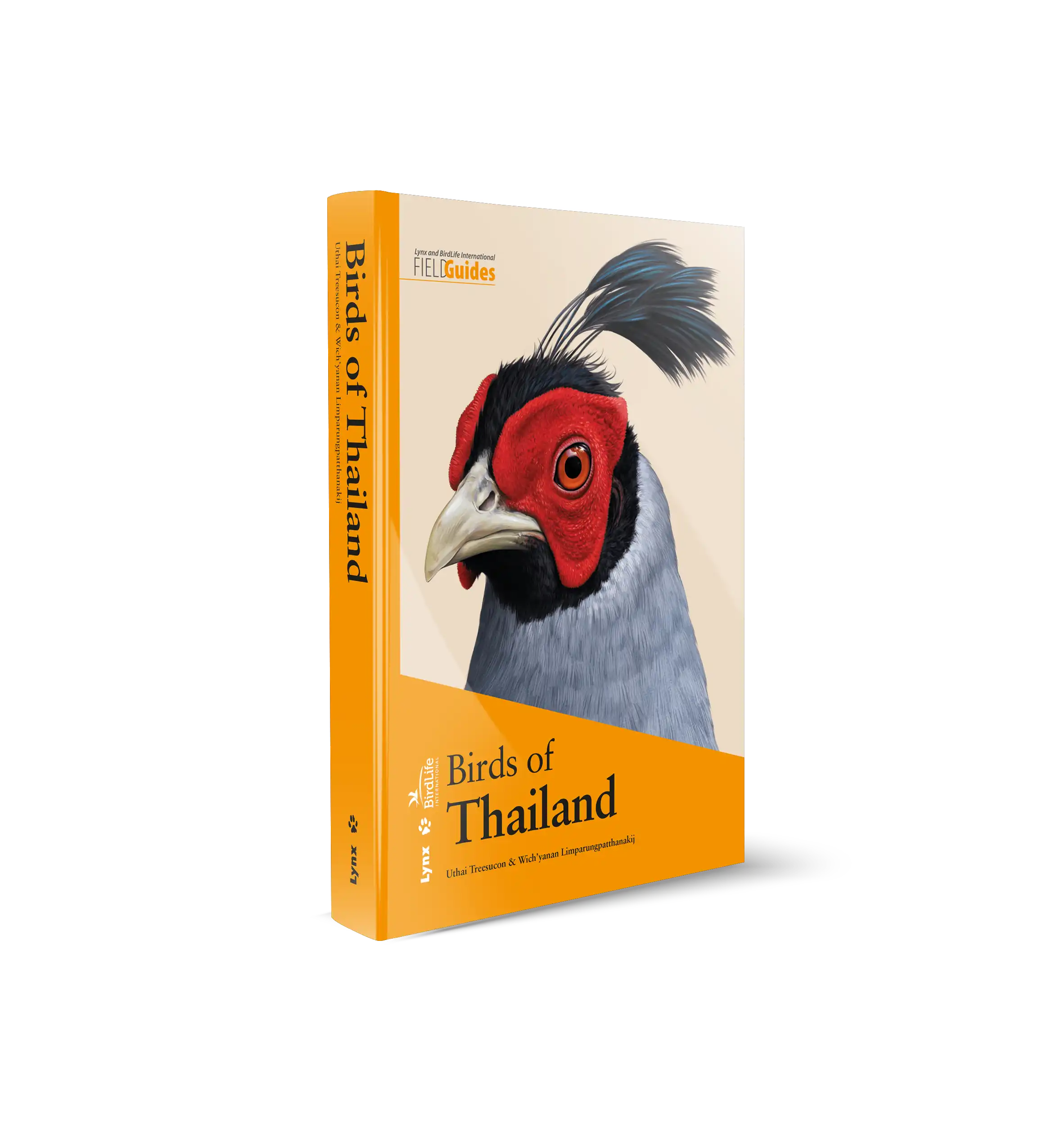
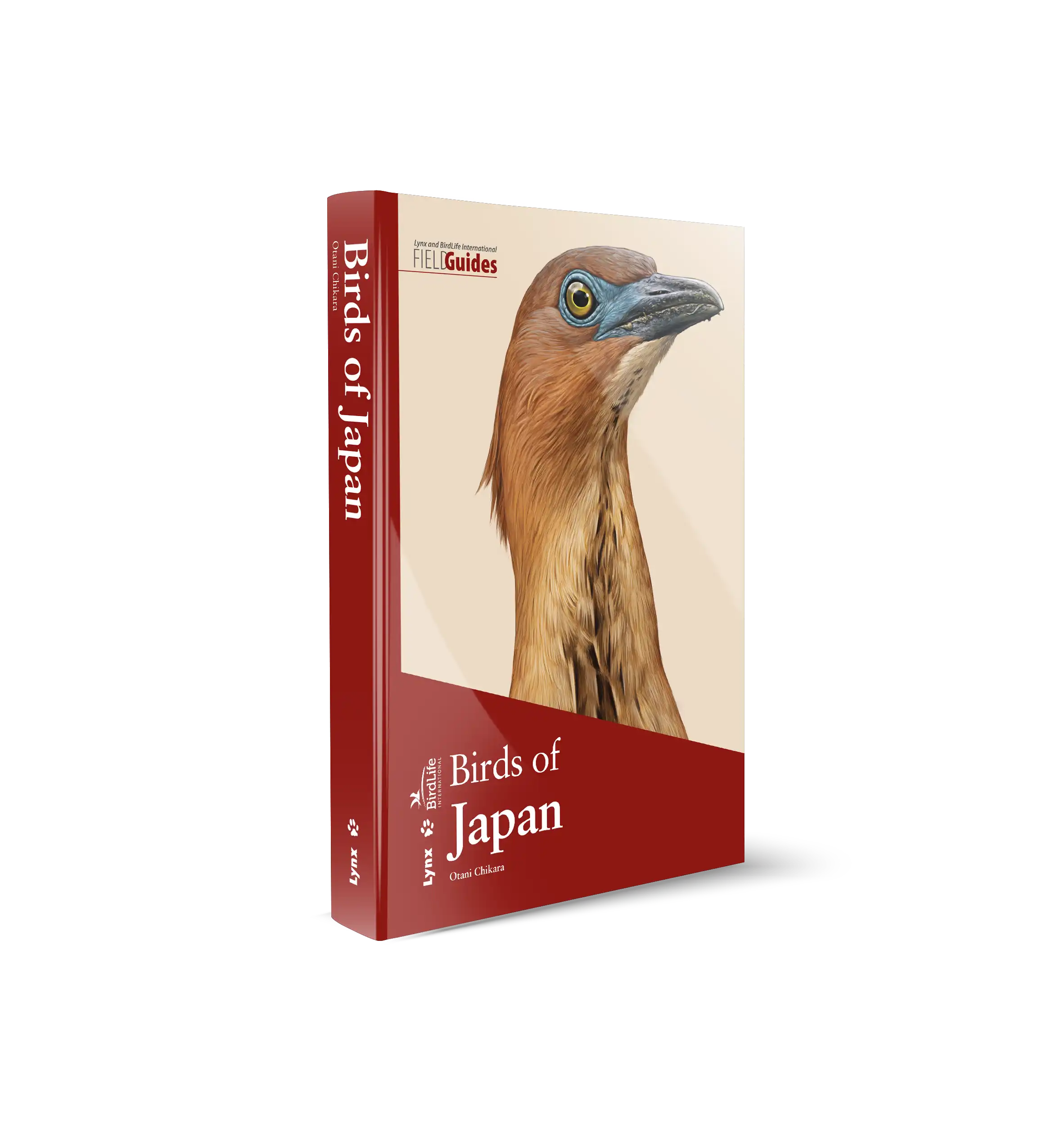








 版权 2025 © Lynx Nature Books
版权 2025 © Lynx Nature Books
Gehan de Silva Wijeyeratne –
In brief, a landmark publication for mammals and a superb reference for mammal watchers.
This book marks another significant milestone in natural history publishing. For the first time ever, within the covers of a single book one has good quality illustrations with a distribution map of all the known species of extant wild mammals. At the time of publication, this numbers 6,459 species in all, a number which will keep growing. The book includes 103 extinct species and 19 domestic species, covering 6,581 species in total. The material in the book is mind boggling with 7,439 illustrations covering sexual dimorphism and distinctive subspecies and morphs and 6,459 distribution maps.
I cannot help feeling a ripple of excitement when I thumb through ‘All the Mammals of the World’ (AMW). It is a special book and a world first. Wow, all the mammals of the world as it says on the tin. In addition to natural history books, I also enjoy popular science books on physics and astronomy. At the time of writing, the mainstream TV news has been covering exciting developments in scientists bottling anti-matter in terrestrial experiments and a renaissance in lunar and space exploration. In a way it is disquieting that the first really decent effort to contain the most popular group of animals, the mammals, within the pages of a single book, has happened only now. Furthermore, it is notable that this is not from a government agency with a multi-million dollar budget, but from a relatively small and specialist publisher in Barcelona. The story of Lynx Nature Books (descended from Lynx Edicions) is a ‘made for a movie’ story in itself of a small, heroic band of people who have had a global impact by bringing together science and the popular appetite for natural history books on a commercially viable business model. In a wider context, this book is a remarkable achievement, not just in natural history publishing, but in the human story of how we catalogue what we have in this precious and imperilled planet. As has often been said, its is hard to conserve without first naming and illustrating what we have and understanding their distributions. Books such as this become a part of the conservation toolkit.
I don’t expect the average person to get excited with the artwork on the rats and mice. However, many of the plates, at least of the larger and more distinctive mammals, have a certain aesthetic appeal, especially if you are pre-disposed towards natural history illustration or mammals. It is a pleasurable exercise to thumb through the book at random and see the colourful and wonderful diversity of mammals. One cannot but help day dream of the exciting mammal-watching expeditions one can indulge in, oh if only one had the time and money. Or to reminisce on past field trips and to check if a mammals you have seen before has now been split into a new species.
This book is the culmination and only possible as a result of the Handbook of the Mammals of the World (HMW) series which in 9 volumes was published in the ten years between 2009 and 2019. Some of the thunder for this book was stolen by the two volume ‘Illustrated Checklist of the Mammals of the World’, with Volume 1 (631 pages) and Volume 2 (535 pages) totalling 1,166 pages. AMW has the same shape 24 × 31 cm as the HMW and weighs in at a hefty 4.6kg. This is not a book you will be taking around in the day pack, but probably one that will be consulted regularly if you are one of the fortunate people who can indulge in a lot of wildlife-centric travel.
The new single volume book at 799 pages means it is 367 pages less compared to the Illustrated Checklists. So, something has had to give way. The loss of information is largely in the taxonomy notes being removed, to make the new single volume slimmer and also more appealing to a wider audience. This is a sensible compromise as readers who are interested in taxonomic references such as those in academia and those who write and photograph field guides like me can consult the earlier work or look up papers online. However, the new book is not a simple reduction of the Illustrated Checklists. Firstly, the taxonomy has been updated. Secondly the books contains 107 newly describes species and 106 split species. Thirdly, it has 37 pages of world atlas maps, a feature seen in other Lynx books. I like the atlas pages as they are useful to use in conjunction with the postage stamp sized, species distribution maps. The references have been severely pared back, but again this is not a huge loss given the more populist audience that is being targeted.
The front sections (pages 1 to 30) and end sections (pages 697 to 799) are not small totalling 130 pages, but are less than a fifth of the book with the bulk of the book being devoted to the species accounts. The species accounts are largely pictorially driven and follow a standard structure with each species having its English common name and Latin name being given prominence with names in French, German and Spanish also provided. The IUCN conservation status is provided as well as key measurements on length and weight and whether a species is monototypic or has distinct subspecies. The distribution map, often supplemented with abbreviated text, is probably the most useful piece of information to most mammal enthusiasts. A picture is worth a thousand words and the maps which shows the world-wide distribution of a species makes it very easy to see if a species is confined to a country, continent or island. It also makes it easier to unravel some of the recent taxonomic splits. However, as in the HMW series, the distribution of subspecies is not marked on the maps. I suspect this is because this would have been too great an undertaking given how volatile subspecies classifications are with ongoing molecular work.
On the plates, a species is surrounded by a thin grey border and the species contained with a genus are encapsulated by a thicker grey border. The genus is made prominent in capital letters in a shaded box with the number of species in that genus indicated. The family divisions are highlighted in large white text on an orange background with the number of genera and species indicated. As with other comparable books by Lynx, the information is rendered easy to navigate visually. Post Covid-19, I have visited West Africa and East Africa. For various reasons, most mammals field guides are quite dated at the time of writing and I found this book quite useful to quickly get a handle on the current taxonomic treatment of species. Even with larger mammals such as the Vervet Monkeys (genus Chlorocebus) and Red Colobus Monkeys (genus Piliocolobus) this book was a useful reference to be exactly sure of what I had photographed.
The front sections contain a brief introduction to the taxonomic divisions, an explanation of the concept of a monophyletic group and a phylogenetic diagram based on DNA sequencing. The subclasses (2), orders (27) and families (160) are listed. The end sections include appendices on Extinct Species (Appendix 1) for extinctions post 1,500 AD, Domestic species (Appendix 2) and Taxonomic Changes and Controversies in Mammalogy (Appendix 3). Appendix 6 on the One-country Endemics is interesting and sees Indonesia, Australia, Brazil, Madagascar, Mexico, China, Philippines and the USA in the top eight countries with more than 100 species that are endemic to a country. The ranking by political unit is interesting but has to be interpreted with care as New Guinea for example is split between Papua New Guinea and Indonesia. Even countries like Portugal make the list with one endemic species.
This book and the Illustrated Checklists cannot be a substitute for a regional or country-level field guide for use in the field. But outside of rodents such as rats and mice, and other smaller mammals such as the bats, many of the other mammals if seen in the field can often be narrowed down to species level using the illustrations and the distribution maps. An electronic version that can be viewed on a phone app would be a handy product extension given that the book itself is too heavy to be taken around. If you already have the nine volume Handbook of the Mammals of the World and the two volume Illustrated Checklist of the Mammals of the World, do you still need this book? I suspect most mammal enthusiasts would want to complete the collection of titles as there is no knowing when another single compendium will supercede this remarkable book.
Fynn Zade –
Very nice book ! I just love looking in the book to see what animals there are in the world. You can also easily count which species you have already seen and look at related species.
TULOUP YVES (验证用户) –
Superbe livre, complet aussi magnifique que celui sur les oiseaux
Juste un tout petit reproche : une illustration pour les espèces disparues et domestique aurait été sympa
Livraison rapide dans un emballage solide faite dans des délais très courts par Fedex avec un suivi remarquable